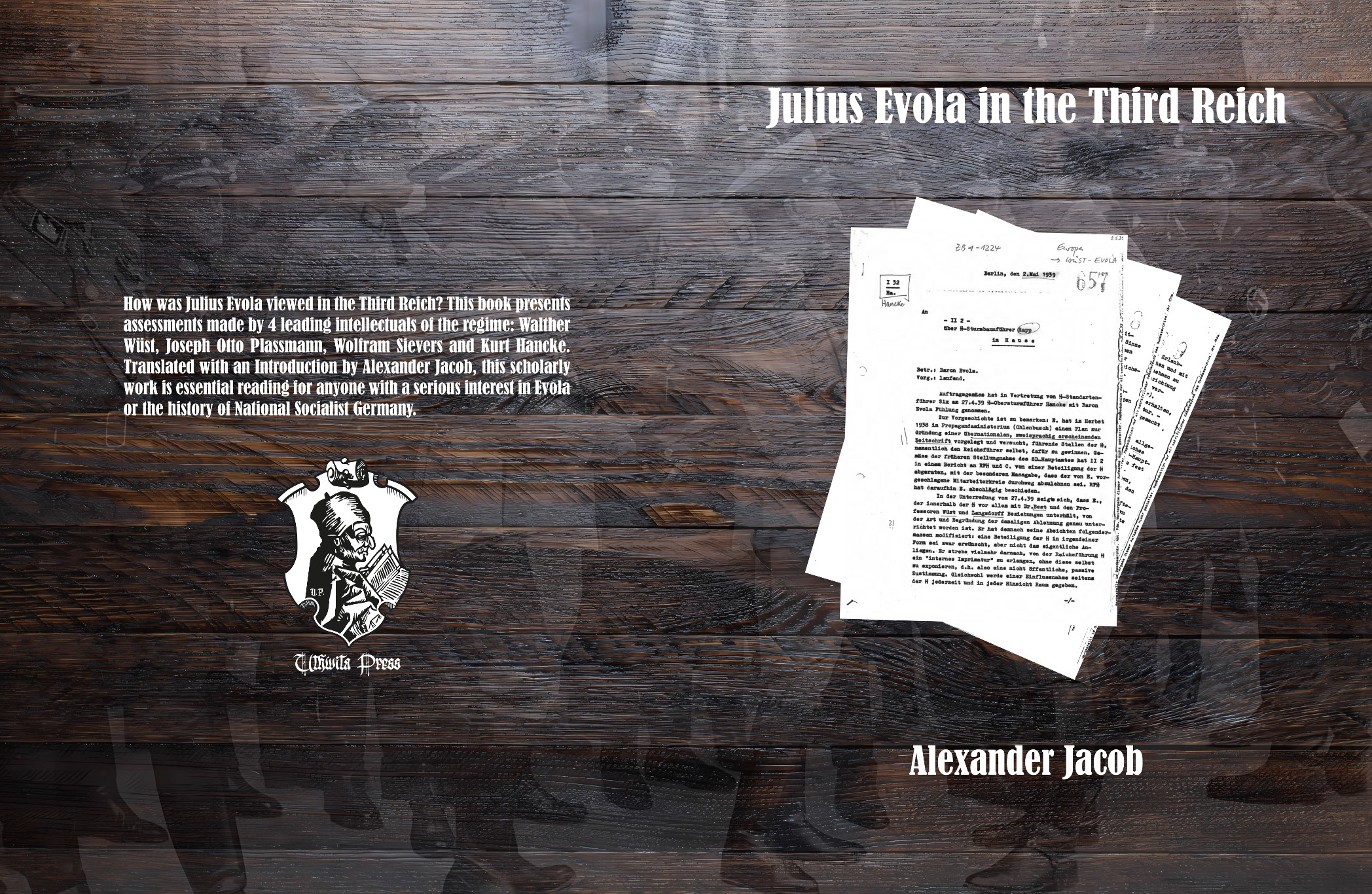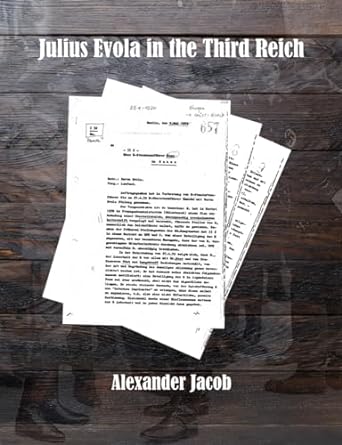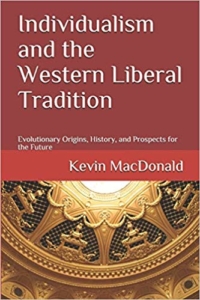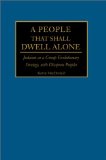The Paradox of MAGA Support for World War Three
The ongoing Israeli genocide of Palestinians (both Christian and Muslim) in Gaza has exposed a curious paradox.
While conservative Republican voters claim to oppose the Leftist ruling class as embodied in the D.C. political establishment, the entertainment and news media, academia, and etc., they nevertheless are in complete and total alignment on the biggest-ticket item on the Jewish agenda: global war with Russia, Iran, and China.
How can this be? These people elected Donald Trump to the presidency in a seemingly clear rejection of the neoconservative interventionism of the Bush era. 2016 was supposed to herald the dawn of a new Republican Party. Of course, that new and improved party never truly emerged. There are innumerable possible explanations for this, not the least of which was President Trump’s horrific staffing decisions and consequent inability to exercise control over his own executive branch. The failures of the Trump Administration aside, conventional right-wing populist wisdom continues to maintain that the Republican base did fundamentally and permanently change, and that it is merely the malfeasance of elected officials that is to blame for the perversion and subversion of the promise of 2016.
While Republican voters do indeed continue to overwhelmingly support President Trump, the idea that this voter base is fundamentally different and better than the party of Bush is a delusion. While Republican voters and politicians are finally starting to show tepid opposition to the endless flow of American money into the coffers of the wholly Jewish-Ukrainian government, this opposition has conveniently only concretized as the wholly Jewish-American government decides to pivot from the Russian front of World War Three to the Middle Eastern front.
Even where Republican voters oppose further Ukraine funding, they largely continue to view Russia and President Putin as enemies of America and of “freedom.” From my own experience with Republican voters, I am confident that, given the choice, they would support direct American war against Russia. When I ran for U.S. Congress in the 2022 midterm cycle, I spoke in countless living rooms and assembly halls in which I met average Republican Trump supporters who proclaimed that “we need to take out Putin!.” I spoke to people who expressed their disdain at the Biden Administration (if one can call it that) for not doing enough to support Ukraine. Throughout the rural Ozarks, I saw homes, wealthy and poor alike, flying the Ukrainian flag.
At the first of the laughable Republican presidential debates this year, held merely to create the illusion of real opposition to Donald Trump, Chris Christie stated—with a straight face—that he went to Ukraine to see “what Vladimir Putin’s army was doing to the free Ukrainian people.” He claimed that over 20,000 children “have been abducted, stolen, ripped from their mothers and fathers and brought back to Russia to be programmed to fight their own families. They have gouged out people’s eyes, cut off their ears and shot people in the back of the head, and then gone into those homes and raped the daughters and wives who were left as widows and orphans.” Republican voters actually believe this. When Tucker Carlson asked the self-styled “Christian leader” Mike Pence how he could support the brutal repression of the Orthodox Church in Ukraine, Pence simply replied that it wasn’t true. Again, ignorant voters simply internalize the simple slogans fed to them by their masters—Ukraine is the “free,” “democratic,” David against the Russian Goliath. Anything else is “Russian propaganda.”
While I would not go so far as to say that the destruction of Russia is a priority for these voters, I would certainly go that far with respect to Republican opinion on China. Regardless of one’s politics or preference of news source, Americans are incessantly proselytized to about “the China threat.” Never mind the fact that the Biden Administration is openly attempting to provoke military hostilities and conducting a sustained and escalating economic war against China; Republican voters are absolutely convinced that the Chinese control the American government. That “Chinese communists” are our biggest threat. The equation is simple: Name a problem actually inflicted upon White America by Jews, and then blame the “Chicoms.” No country is more universally demonized among conservatives than China. When—not if—Taiwan is made the third front of World War Three, rural Americans will be more than happy to send their sons to die for “capitalism and democracy.”
These rural Americans are, however, more interested in, indeed thrilled at the prospect of sending their sons to die and be maimed in the name of Israel. When it comes to Israel, conservative voters are entranced, their wallets open, their hearts on their sleeve, their pulse quickened, their pupils dilated. A perfect example of these Americans is furnished by the Jerusalem Post:
Meet the Christian Cowboys defending Israel’s heartland
Fifteen American Christian cowboys with their wide-brimmed hats, denim shirts, tight Wrangler jeans, leather belts with large buckles, and well-worn boots have come to Israel to protect the Jewish residents of the biblical heartland – Judea and Samaria.
“We want to live for Israel; that is our goal,” said 24-year-old Yosef Strain from Montana, his voice carrying a subtle twang.
The young men, mostly in their early 20s, hail from across the South: Tennessee, Missouri, Texas, Arkansas, and Montana [Note: Apparently, the Jerusalem Post believes that Montana is a Southern State]. They join other faith-driven volunteers in Israel through Hayovel. For 20 years, this organization has been bringing several hundred Christians to Israel each year to help harvest the grapes of the biblical heartland. These Evangelical Christians are usually focused on restoring Christian-Jewish relations and confirming Israel’s right to their ancestral homeland.
However, after the October 7 Hamas massacre, “we understood the morbid reality that we are facing a serious enemy and the world does not recognize it,” explained Hayovel Director of Operations Joshua Waller. “If we did not say yes [to helping Judea and Samaria], no one was.”
Hayovel launched Operation Itai to raise $29 million for security supplies for the West Bank. So far, more than $2 million has been raised from American Christian Zionists for bullet-proof vests, helmets, night vision binoculars, drones, flashlights and more.
Itai was the non-Jewish commander of King David’s 600-men army, mentioned in II Samuel, chapter 15.
“We did not set a budget,” said Waller. “We asked the communities what they needed, and Operation Itai responded.”
In addition, Hayovel decided to bring a group of “hardcore guys” to help install security roads, build warehouses for supplies, deliver supplies, and do 24/7 guard duty, Waller said.
These 15 cowboys were selected.
“Because of their farming-can-do attitudes, we knew these would be the right guys,” Waller said.
“Everyone is talking about a proportionate response,” he added. “A proportionate Christian response would be to bring the supplies needed to stop another Jewish massacre from happening.”
He said Gaza is only one front. Syria and Lebanon are two other fronts, and the West Bank is the fourth front.
“This is one of the most severe fronts. You have around 500,000 Jewish people scattered among 200 different communities living next to two- to three-million Palestinians, and there are no security fences between them and us,” Waller added. “No one wants to say it, but these Palestinians, many of them are also involved with Hamas or another terrorist organization, and if they believe they are strong enough and Israel is weak enough, they will strike.”
The cowboys stay on Har Bracha with Hayovel but work throughout the West Bank, including in the southern Hebron Hills. They participate in what they call “farm watch” – staying up all night to catch cattle and sheep thieves and terrorists.
These boys are the real deal.
“A lot of people think we are dressing up,” Strain, 22, wearing a large Star of David metal belt buckle, told The Jerusalem Post. “We just have a different style and culture.”
Strain, whose family farm trains horses and rides them in rodeos, said he had been to Israel three times before, and his parents were “pretty supportive.”
And none of the cowboys seemed very afraid of violence.
Charles Hutsler, 19, from Huntsville, Arkansas, said he was “not scared” about being in the country during a war because “God has my back.”
Ezekiel (“Zeek”) Strain, 20, Yosef Strain’s brother, said he believes in Israel in the promised land, specifically, the biblical heartland.
“I ain’t scared of what could happen or might happen. I just want to help,” he said.
“God put a special calling on my life and has given me certain talents, direct my life in a certain path, that I can do something when the time comes,” added Johnny Plocher, 24. “I am not on Earth for money, a new truck or property, a vacation – that is not my purpose. I feel called here now and am glad to be here.”
The cowboys stressed that they do not represent the Biden administration or liberal Americans.
“Biden does not represent these cowboys,” Waller said. “Americans support Israel, including Judea and Samaria. The Biden administration believes in a two-state solution and would like to see 500,000 Jews pushed out of here, their biblical heartland.
“These cowboys represent the America behind Israel and the Bible.”
He continued: “We are here to say no way to have to cut the State of Israel in half and the ability to create an Arab state in the idle of Israel’s heartland. These cowboys are not going to see it.”
The very same Republican voters who deride the Lügenpresse as the enemy of the people, who watched for years as news presenters lied about President Trump, about “COVID” and the mRNA injections, about everything, wholeheartedly and unquestioningly believe the same media when it comes to Israel. The blatant, shoddy atrocity propaganda about “decapitated babies,” almost as ridiculous as atrocity propaganda about the alleged “Holocaust,” was absorbed and believed immediately.
Israel and its agents within the Bush Administration were likely involved in the attack on the United States on September 11, 2001. But the American public doesn’t know — indeed has no interest in knowing. Trillions of dollars, millions of lives, and unquantifiable civil liberties were lost in consequence. Christian-Islamic relations were perhaps irrevocably ruined, exacerbated by simultaneously flooding the zone with nonstop anti-Muslim “national security” propaganda and a constant flow of Muslim immigrants into the West.
In other words, the same vermin who told us to fear Muslims also told Muslims that we hate them and used our armed forces to slaughter hundreds of thousands of Muslims while also importing millions of Muslims into our country. Israel made us hate each other, in order to use our young men as cannon fodder to remove their geopolitical enemies from the playing field, with the current genocide of Gaza likely designed to culminate in a direct war against Iran. Op-ed in the Jerusalem Post (November 26):
America needs to bomb Iran – opinion
How do you deal with Iran when it intends to take out Israel with a nuclear bomb? There’s only one way this can be prevented: A preemptive strike on Iran by America.
When evangelical Representative Brian Mast (R-FL) wears an Israel Defense Forces uniform to Congress and repeats the Israeli government line that there are no innocent Palestinians in Gaza, when Breitbart tells us that Palestinian hospitals, refugee camps, and schools are “Hamas bases,” when politicians like Ron DeSantis and Josh Hawley declare that we must censor and criminalize “antisemitic speech,” which is to say any criticism of Israel or individual Jews, when Nimrata “Nikki Haley” Randhawa wags her finger on television that we have to “finish” Iran, American Christians clap their fat hands together like seals and cheer this slaughter of tens of thousands of innocent civilians, primarily children. They donate their money to the “International Fellowship of Christians and Jews” when they see Mike Huckabee and Michelle Bachman on the screen, chiding us to “bless Israel” and “feed the hungry Jews.” They’re hungry, alright—hungry for Christian blood.
I am a Christian, and thus it pains me to say this, but it must nevertheless be said: Self-professed Christians are dragging us all to Hell with them.
The South is home to most of the few Christian churches that have not fallen to feminism, homosexuality, transgenderism, negrophilia, and the other forces which have largely captured American Christianity. And yet these churches, otherwise seemingly bastions of traditional Christianity, are just as corrupt and satanic as those that openly espouse Leftism. They have been conquered, for many decades now, by Christian Zionism, the most consequential heresy in history. I know of many churches in the South firsthand whose Sunday sermons explore the topic of “Why Christians owe a duty to Israel.”
These pathetic, gullible, lost souls still think that the Jewish religion is that of the Old Testament, that Jews are their friends, that Jews are still God’s Chosen, that Christians are actually subordinate to Jews. They don’t know that the Jewish Talmud says that Christ is being boiled in excrement for eternity. Most insidiously, though, these rubes believe that by physically aiding and even fighting for the Israeli state, they will hasten the Second Coming of Christ. The Book of Revelation is impenetrable, and yet Christian Zionists believe they have it all worked out. This account of a sermon by the notorious John Hagee of “Christians United for Israel” is instructive:
Pastor John Hagee of Cornerstone Church brought a focused message to his congregation and millions of viewers around the world.
Hagee discussed the horror of the Hamas attacks on Israel, then quickly turned his attention. “The righteous rage of America must be focused on Iran,” he thundered, flanked by Israeli diplomatic officials and joined by several members of Congress, who recorded pretaped messages of support for his cause.
The pastor called for increased military assistance to Israel and said the U.S. should ratchet up sanctions, block oil shipments to Iran, and strike at Iranian ships. “Let me say it to you in plain Texas speech,” Hagee continued, “America should roll up its sleeves and knock the living daylights out of Tehran for what they have done to Israel. Hit them so hard that our enemies will once again fear us.”
The crowd in San Antonio erupted in applause and waved small Israeli flags.
Many televangelists have depicted the Hamas terror attack on Israel on October 7 as a piece of a biblical prophecy that some evangelical Christians believe is sign of the “End Times.” These Christian Zionists have preached that bloodshed in Israel is necessary for the second coming of Jesus Christ.
In this interpretation, Christian Zionists cite the prophet Isaiah’s words in the Old Testament, that God “shall assemble the outcasts of Israel, and gather together the dispersed Judah from the four corners of the Earth,” a prophecy they believe was fulfilled with the creation of Israel in 1948. Further, verses from the Book of Revelation that discuss an apocalyptic war over Israel will usher in Christ’s return and reign over the earth.
For many of these evangelical Christians, the modern founding of Israel was the beginning of this prophecy, which they argue states that Jews must control Jerusalem before a war between the evil empires of “Gog and Magog.” Televangelists such as Hagee have said that various Arab nations, as well as China, Russia, and Iran, correspond to these biblical enemies of Israel, and he believes a war is necessary to fulfill the prophecy. According to this belief, the End Times conclude with faithful Christians raptured to heaven and Christ returning to slay or convert nonbelievers, including Jews, before ruling over the world in a final era of humankind.
Such a view of current events was on full display last Sunday, as co-pastor Matt Hagee, John Hagee’s son, and heir to the religious throne, presided over a geopolitical map of the Middle East, showing that Israel was surrounded by its biblical enemies such as a Magog as Russia and Persia as Iran.
“The Secretary of State is not going to get us out of this one,” said the younger Hagee. “God has a hook in the jaws of these nations, and he’s drawing them here,” he continued, pointing at the map. “God tells Ezekiel exactly how he’s going to defend Israel,” he said. “He speaks about raining down fire and hail and brimstone. That’s a heavenly air assault.”
Israel’s ambassador to the United Nations, Gilad Erdan, took the stage at the San Antonio, Texas church later that day, citing the prophet Isaiah, a nod to End Times theology, to call for Americans to support Israel’s war.
“We need to be partners with God,” said Erdan. “For those of us in Israel, we are battling on the frontlines, for you my friends, we need you on the frontlines as well,” he said.
The frontlines on which Americans could help, the Israeli ambassador explained, are “the political frontlines, making sure your elected officials on the state and national level stand with unwavering support for Israel.”
“Israel is the apple of God’s eye, Israel is unique to God,” thundered Pastor John Hagee during the broadcast. “Let me say to every person watching this telecast,” Hagee continued, “I encourage you to bless the house of Israel with your financial giving.”
The telecast featured messages from Sens. Tom Cotton of Arkansas and Ted Cruz of Texas, as well as Rep. Tom Emmer of Minnesota, the House Majority Whip.
“Congress must take deliberate action to give Israel whatever resources they need to end Hamas once and for all and combat Iran’s support of terrorism,” said Emmer, who ended his message with a prayer. “This savage atrocity wasn’t just the worst slaughter of Jews since World War 2, but one of the worst terror attacks against America since 9/11,” remarked Cotton.
The populist delusion that, were we to remove Jewish money and party machinery from the equation, average Americans would right the ship of state and everything would be hunky-dory is just that: a delusion. It is certainly more comfortable than the truth, which is that American politicians are accurate reflections of the people who vote for them.
Yes, the 2020 presidential election was indubitably stolen. Many elections are stolen. But not every election is stolen. Very ignorant, very real people actually show up on election day to vote for the likes of Lindsey Graham. And those very ignorant, very real people, even those who steadfastly support President Trump and have faith that a Republican will ever be elected president again in this country, will in one breath cry, “America First!” and, in the next, “We have to support Israel!”
Certainly, there are encouraging signs, such as falling rates of enlistment in the armed forces. But all it will take is another 9/11 to get those numbers back up, or, failing that, a draft. Given the fact that Republican voters can’t find it within themselves to muster up the courage to resist the aggressive Jewish homosexual-transgender agenda to brainwash, rape, and mutilate their own children, I don’t predict any resistance against a draft. After all, White conservatives are the only demographic left who idolize and honor the military and police — who hate them. Republicans will be the first in line to hand in their guns—and as they’re led to the gulags, they’ll thank the guards for their service.
In the final analysis, there will be no solution to any question until there is a solution to the Jewish Question. It is a waste of time to talk about anything if we lack the spine to name the culprit, to speak freely of our oppressors. It gives me no pleasure to report this, but the Republican electorate is simply not ready to even entertain a discussion of the Jewish xenocracy that rules the darkness which once was America. They will continue to be good goyim, working away in their cubicles day after day and raising new generations of children to kill and die for their Jewish masters.
Forgive them, Father, for they know not what they do.

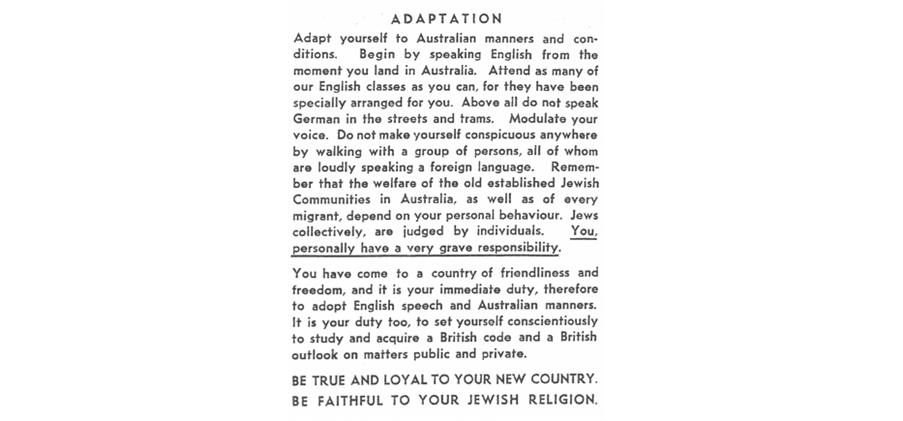 Extract from a pamphlet issued by the Australian Jewish Welfare Society to European refugees, encouraging them to assimilate as quickly as possible. Examples such as this were often pointed to by the refugees as evidence of the hostile opinion of Anglo-Jewry.
Extract from a pamphlet issued by the Australian Jewish Welfare Society to European refugees, encouraging them to assimilate as quickly as possible. Examples such as this were often pointed to by the refugees as evidence of the hostile opinion of Anglo-Jewry.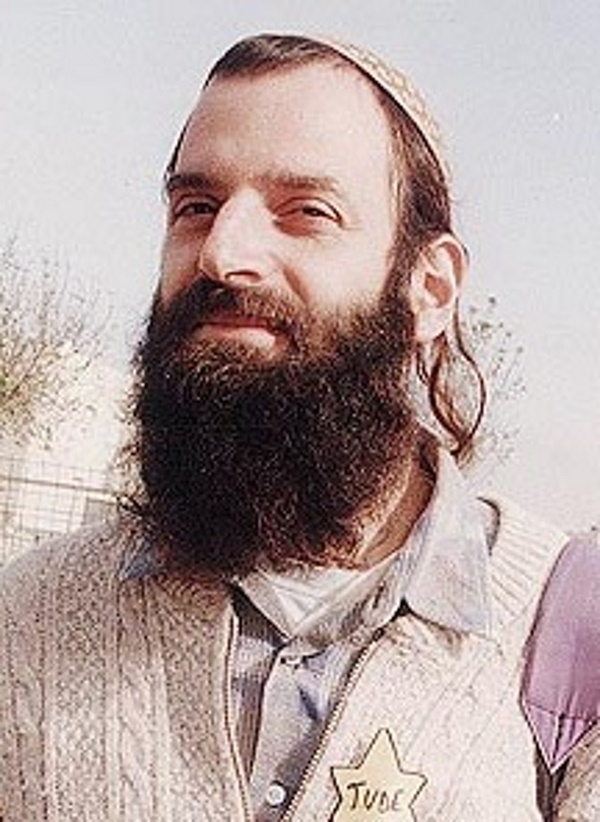 Martyr with a machine-gun: the Judeo-fascist Baruch Goldstein (
Martyr with a machine-gun: the Judeo-fascist Baruch Goldstein (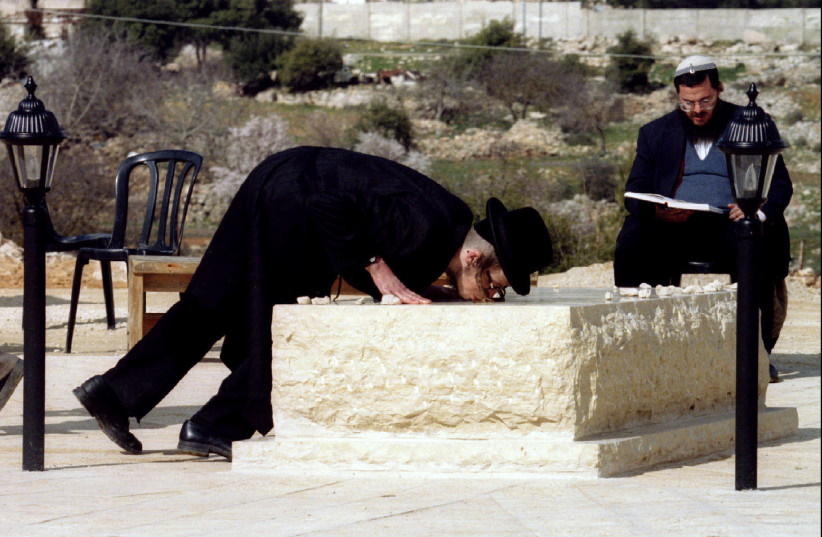 A Judeo-fascist kisses Goldstein’s tombstone, which calls him a saint and says “He gave his life for the people of Israel, its Torah and land” (
A Judeo-fascist kisses Goldstein’s tombstone, which calls him a saint and says “He gave his life for the people of Israel, its Torah and land” ( Goldstein fan
Goldstein fan  The smirking and sneering Stuart Seldowitz #1
The smirking and sneering Stuart Seldowitz #1 The smirking and sneering Stuart Seldowitz #2
The smirking and sneering Stuart Seldowitz #2 The smirking and sneering Stuart Seldowitz #3
The smirking and sneering Stuart Seldowitz #3 Orwell-fans at Harry’s Place demand that non-White Muslims be arrested for thought-crime
Orwell-fans at Harry’s Place demand that non-White Muslims be arrested for thought-crime